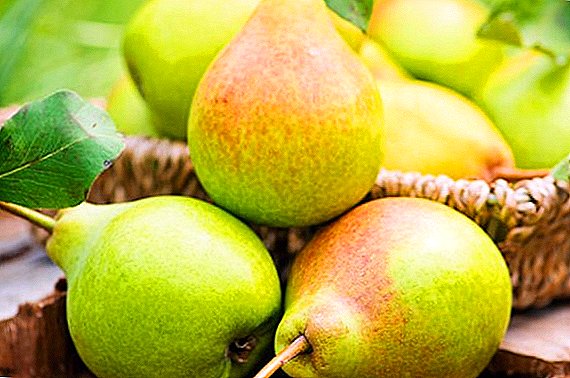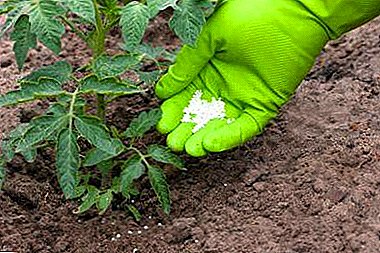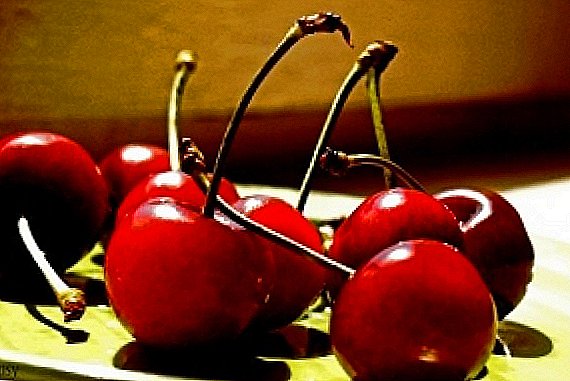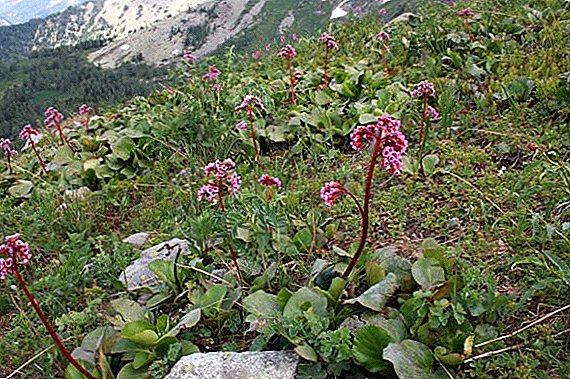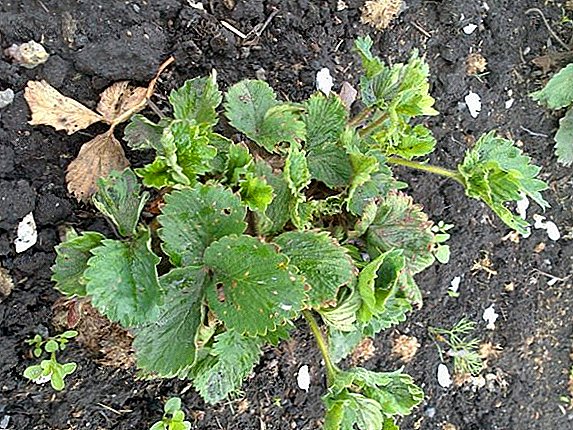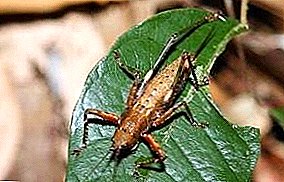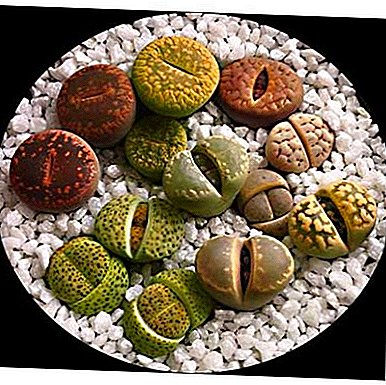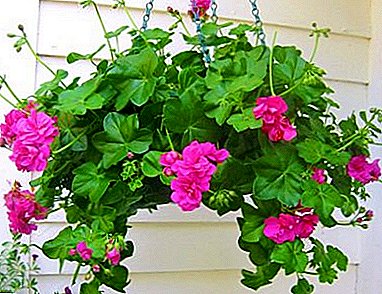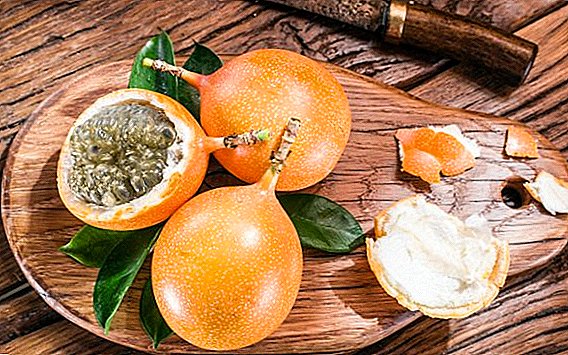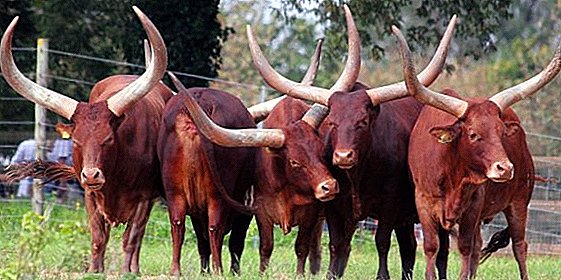 Few people think when they see a modern cow, where it came from, and who was its progenitor. Let us consider from which species of animals it originated, and how animals of the species of cattle have changed over the whole time.
Few people think when they see a modern cow, where it came from, and who was its progenitor. Let us consider from which species of animals it originated, and how animals of the species of cattle have changed over the whole time.
Tour - the extinct wild ancestor of the domestic cow
All cows and bulls are descended from the already extinct primitive representatives of wild cattle - bulls tours. These animals lived a long time ago, but when people began to interfere in their habitat, namely, to cut down the forests where they lived, these bulls became less and less.  The last tour was seen in 1627, it was then that this species ceased to exist. Interestingly, the last representatives died because of diseases due to poor genetic inheritance.
The last tour was seen in 1627, it was then that this species ceased to exist. Interestingly, the last representatives died because of diseases due to poor genetic inheritance.
You will probably be interested to learn the anatomy of a horn from a bull and what they serve for.
During its existence the tour was the largest representative of the ungulates. Scientific studies and historical documents provide an accurate description of these animals:
- height - up to 2 m;
- weight - not less than 800 kg;
- body design muscular;
- there are large pointed horns on their heads, they grew to 100 cm;
- hump on the shoulders;
- a color of dark color with a brown shade.

Wild bulls of our time
Today in nature there are many modern descendants of tours. Consider what distinctive features each species has, as well as where they live and what they feed on.
Read the 10 most interesting facts about cows.
European bison
Bison is the largest beast of modern fauna in Europe. This representative of cattle has the following external characteristics:
- the length of the body in an adult representative ranges from 230-350 cm;
- height withers reaches 2 m;
- skull length - 50 cm;
- the neck is short and thick;
- live weight - up to 1 ton;
- physique massive;
- front end much development than rear;
- tail grows to a length of 60 cm;
- color monophonic brown.
 The modern bison is a descendant of the primitive bison priscus that inhabited Eurasia. At first, the distribution of bison was noted in large areas: from the Iberian Peninsula to Western Siberia, also capturing the southern part of Scandinavia and England. Now in Europe there are only two main subspecies: the European lowland and Caucasian bison.
The modern bison is a descendant of the primitive bison priscus that inhabited Eurasia. At first, the distribution of bison was noted in large areas: from the Iberian Peninsula to Western Siberia, also capturing the southern part of Scandinavia and England. Now in Europe there are only two main subspecies: the European lowland and Caucasian bison.Important! Today, these animals can be found in thirty countries, where they simultaneously live both in the wild and in pens. The main habitats are deciduous, deciduous and even mixed coniferous-deciduous forests, as well as meadows with developed grass cover.Food for these animals is everything that they find in the forest or on the forest edges. Throughout the year, animals need woody feed. They willingly eat different types of willows, hornbeam, aspen and many other trees, namely their parts: leaves, bark and thin branches.
There are eight centers in Belarus that breed a sub-population of European bison. In Russia there are two regions where today you can meet these animals: the North Caucasus and the center of the European part. 
North American Bison
Bison refers to those animals from the meeting with which the skin runs through a tremor. Its size is huge, and the view is impressive. In addition, the North American bison is endowed with the following characteristics:
- body length - up to 3 m;
- height at withers reaches 2 m;
- head is massive, forehead is wide;
- there are short horns on either side of the head, they diverge to the sides, with the ends bent inward;
- neck is massive and short;
- there is a hump on the neck;
- the front is much more massive than the back;
- males weigh about 1.2 tons;
- females a little less - a maximum of 700 kg;
- legs strong and squat;
- the tail is short; there is a tassel at the end;
- excellent hearing and smell;
- the body is covered with gray wool with a brown tint;
- on the head, chest and beard, the coat is darker and longer, which gives the buffalo a larger volume.
We advise you to consider what meat breeds of bulls are best grown for fattening.
These animals appeared on the territory of modern southern Europe. Later they spread throughout Eurasia and even North America. The first bulls were 2 times larger than their modern representatives. They live in huge herds of up to 20 thousand individuals.  The primacy in the herd is given to several old males. In the wild, their life expectancy is 20 years. Today in nature there are two subspecies: forest and steppe.
The primacy in the herd is given to several old males. In the wild, their life expectancy is 20 years. Today in nature there are two subspecies: forest and steppe.
To expand the range of bison moved into several areas of North America. Today they live in Northwest Canada, in the province of British Columbia. In the wild, North American bison are listed in the Red Book, as a species that is on the verge of extinction. On farms they are grown for commercial use.
Yak
Yib is considered the birthplace of Tibet. These are single pack animals that live in the wild in small herds or in proud solitude. Life expectancy is several decades. Yak is endowed with expressive and memorable features:
- male body length - 4.3 m;
- the female reaches a length of no more than 3 m;
- the tail grows in length to 1 m;
- head set low;
- because of the hump, the back seems to be sloping;
- height of withers is 2 m;
- weight reaches 1 ton;
- on the head are long, up to 95 cm, widely spaced horns, they are bent and directed in different directions;
- body color dark brown or grayish black;
- coat long, shaggy, almost completely covers limbs.

Today it can be found not only in the highlands of Tibet, to which it has adapted, but also in other places of the planet. Yaks tolerate low temperatures well, because of their long wool, they can tolerate frosts down to -35 ° C. They loved the mountainous Pakistani and Afghan expanses, as well as farms in China and Iran, Nepal and Mongolia.
Single specimens are found in Altai and in Buryatia. Due to the fact that a person captures the area of their distribution, their number has significantly decreased. Today yak is listed in the Red Book.
Important! The wild bull is one of the most dangerous and evil animals, capable at any moment to come to grips with a person or other wild animals.
Vatussi
Wherever there is a bull watusi, it attracts the attention of others. Its history goes back over 6 thousand years. They are also called "bulls of kings." The forefathers of Watusi were already extinct bulls tours. This species became the basis of African cattle.  External characteristics:
External characteristics:
- adult bulls weight - 700 kg;
- cows grow to 550 kg;
- long round horns that grow to a length of 3.7 m;
- long tail;
- body color can be varied;
- the coat is short.
Did you know? Since ancient times, bulls and cows of this breed were considered sacred. They were never killed for meat. The owner was considered rich based on how much live livestock was in his possession, since cows of this species give a lot of milk.
In addition, they have developed the instinct of protection of young animals, while staying for the night, adults lie in a circle, while the calves are in its center for safety. 
Zebu
Zebu is an Asian cow that has adapted to life in a hot and humid climate. The homeland of these animals is South Asia. Consider what the distinctive characteristics of zebu are known:
- height reaches 150 cm;
- body length - 160 cm;
- head and neck elongated;
- under the neck is a prominent fleshy fold;
- on the nape of the big hump;
- horns of various sizes and shapes;
- head extended with a prominent forehead;
- bull weight - 900 kg, cow - 300 kg lighter;
- legs high, which gives the speed of movement;
- skin is dense, covered with sparse hairs;
- The suit is light, light brown or white.
We recommend to get acquainted with the diet of the bull-manufacturer.
Animals feed on grass, thin branches and leaves. In search of food can travel long distances. They live in regions with tropical and subtropical climates. Today, in addition to India, they can be found in Asia and Africa, in Japan, Korea, Madagascar, as well as in the USA, Brazil and other countries. 
Gaur - wild bull from Nepal
Another name is Indian bison, it is the largest representative of the bull genus, which is preserved today. Gaur is from South and Southeast Asia. Description of the appearance of the wild buffalo consists of the following indicators:
- body length - within 3 m;
- tail length - up to 1 m;
- height at withers - up to 2 m;
- there is a hump on the shoulders;
- weight ranges from 600-1500 kg;
- on the head are horns up to 1 m;
- the wool is colored in different colors, with white stockings on the legs.
 Today there is a reduction in the population in some parts of the range, this figure is 70%. The population is in decline as a result of uncontrolled hunting, as well as the destruction of their habitat.
Today there is a reduction in the population in some parts of the range, this figure is 70%. The population is in decline as a result of uncontrolled hunting, as well as the destruction of their habitat.African buffalo
This buffalo is the largest on the planet. His homeland is Africa. These animals live in the wild for about 16 years, are gregarious. They are endowed with the following characteristics:
- body length - 3.5 m;
- in height grow to 1.8 m;
- weight reaches 1 ton and more;
- body muscular, the front part is much larger than the back;
- head large, low set;
- on the head are huge horns that grow together and resemble shell;
- coat color reddish;
- legs strong, front stronger than the back;
- animals are endowed with good hearing, but weak eyesight.
 The habitats of these bulls are savannah, mountains and forest. They need plenty of water. Eat grass and leaves. During the danger, they are collected in a herd, youngsters are placed in the center and run away. It is known that their speed can reach 57 km / h. Today, African buffalo live in southern and eastern Africa. They need a lot of space near water bodies.
The habitats of these bulls are savannah, mountains and forest. They need plenty of water. Eat grass and leaves. During the danger, they are collected in a herd, youngsters are placed in the center and run away. It is known that their speed can reach 57 km / h. Today, African buffalo live in southern and eastern Africa. They need a lot of space near water bodies.Did you know? Buffalo milk is better than cow's protein. Its fat content is 8%. On average, one buffalo per year gives 2 tons of milk.
Asian (Indian) buffalo
The Asian Buffalo is a relative of the wild bison, yaks and zebu. These are beautiful and powerful animals that fight with humans for the right to live. Asian buffaloes are artiodactyls that belong to the bovid family and are endowed with the following characteristics:
- the bull has a body length of 3 m;
- its height reaches 2 m;
- weight is in the range of 800-1200 kg;
- on the head are horns in the shape of a crescent, the distance between them is 2 m;
- tail grows to a length of 90 cm;
- wool coarse, not thick, brown shade;
- limbs high and strong.
 The character justifies the appearance, since the buffalo of this breed is very fierce. He fights well, speaking against predators. These bulls live in herds. There is no strict submission. They feed on underwater and coastal vegetation, they do it preferably in the evening, and during the day they like to just sit in the water.
The character justifies the appearance, since the buffalo of this breed is very fierce. He fights well, speaking against predators. These bulls live in herds. There is no strict submission. They feed on underwater and coastal vegetation, they do it preferably in the evening, and during the day they like to just sit in the water.We advise you to find out the average mass of a cow and what its weight depends on.
There are Asian buffaloes in Nepal, India, Thailand, Cambodia and Bhutan. They like plains with densely overgrown grass, where there are wide bodies of water nearby.
As we see, there are many unusual animals in nature, whose descendants lived many centuries ago. It is important to take care of them, so that the next generation will not have to get acquainted with them only from pictures in books.


